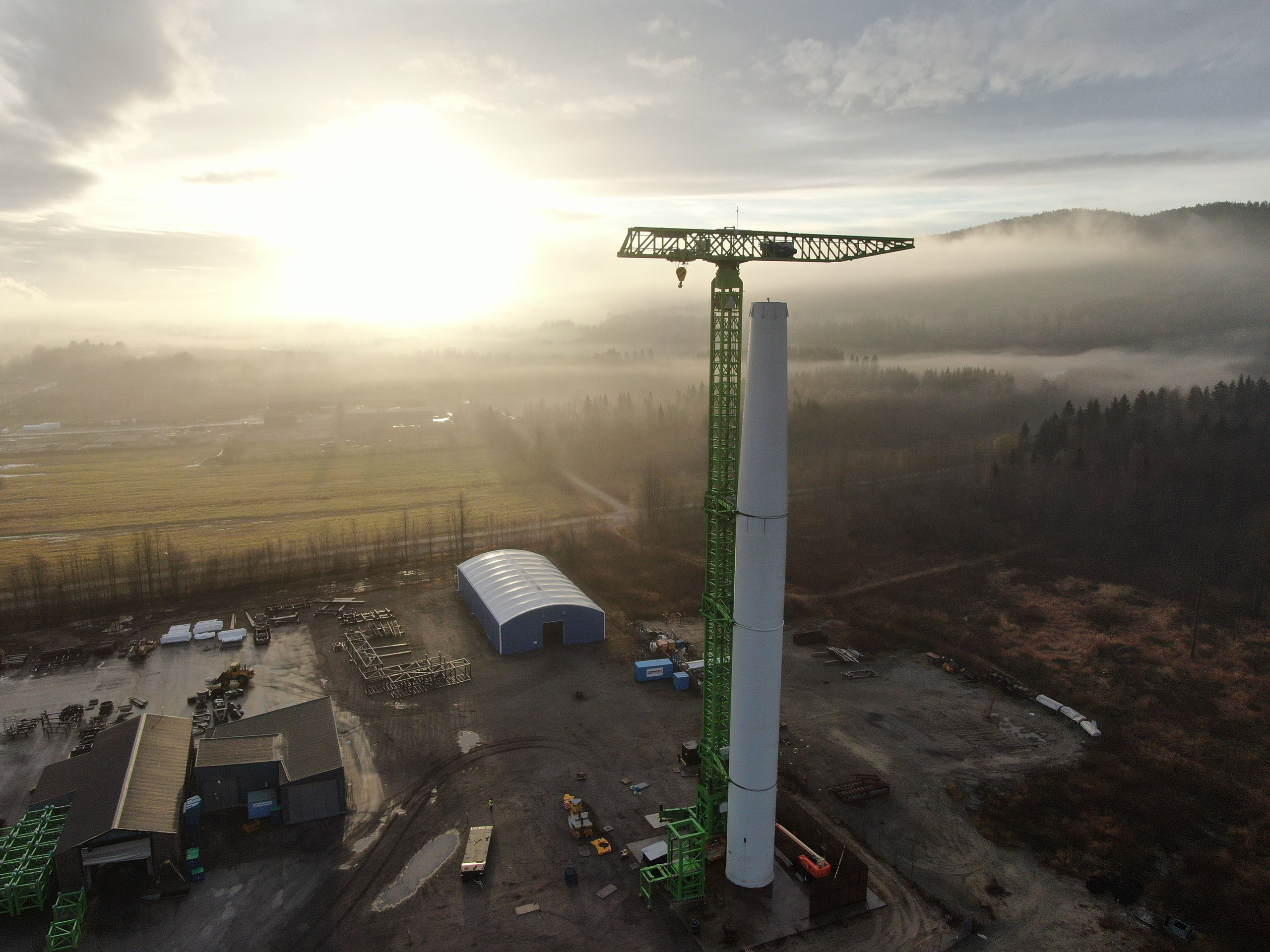Revolutionary crane reaches milestone

A prototype of the Salamander Quick Lift solution from S&L Access Systems has reached the important milestone at the test tower in Örnsköldsvik, firmly establishing proof of concept. The finished solution will be able to reach hook heights of up to 210 meters.
S&L Access Systems reached a milestone in November, when a complete Salamander Quick Lift prototype crane performed final concept tests. The crane had full functionality, scaling the 63 meter test tower outside of Örnsköldsvik, Sweden. “Reaching this highly significant milestone feels fantastic. We’ve brought a completely new solution into the industry,” says Marcus Dahlinder, CEO S&L Access Systems. He continues: We have worked extremely hard to reach this point, and have always had faith that the solution would work. But you never know until you see it for real. ”
The Salamander Quick Lift solution consists of crane sections ready for assembly, reaching hook heights of up to 210 meters. The crane is anchored to the wind tower and sections are jacked up with a press from the bottom, raising the crane quickly and efficiently. The crane is assembled much more quickly in comparison with other existing solutions, and reduces transports by 75 percent.
The solution has been in development since 2019, with S&L Access Systems deliberately working quietly in partnership with suppliers. In 2021 Vestas, one of the world’s leading wind turbine companies, joined as an active partner, taking the developing solution into the limelight.
“The team has worked in the shadows for a long time, and it’s great to finally be able to show a proof of concept. We’ve worked in tight collaboration with all our partners, and they have contributed to the development. This wouldn’t have been possible without them,” says Marcus Dahlinder.
Market reactions have been very positive, not least in parts of the world where geography often makes transports of crane parts difficult. “The next step is to build the company and secure competence. The plan is to expand with 20 employees during 2022 and with another 50 people within three years,” says Marcus Dahlinder.